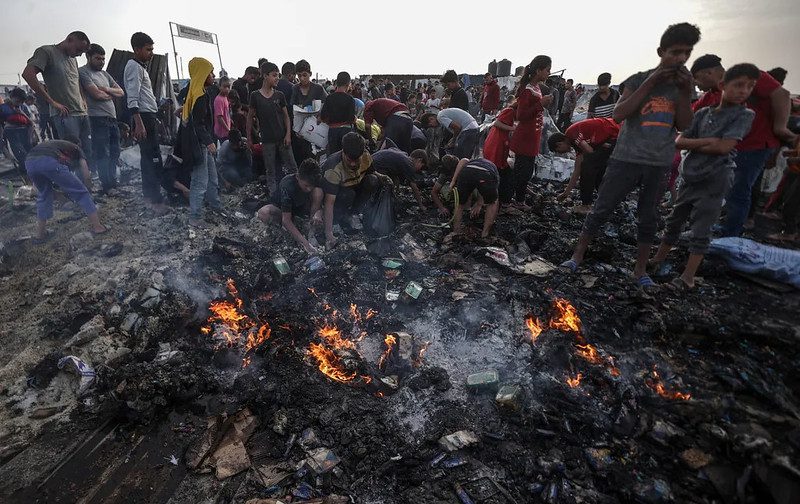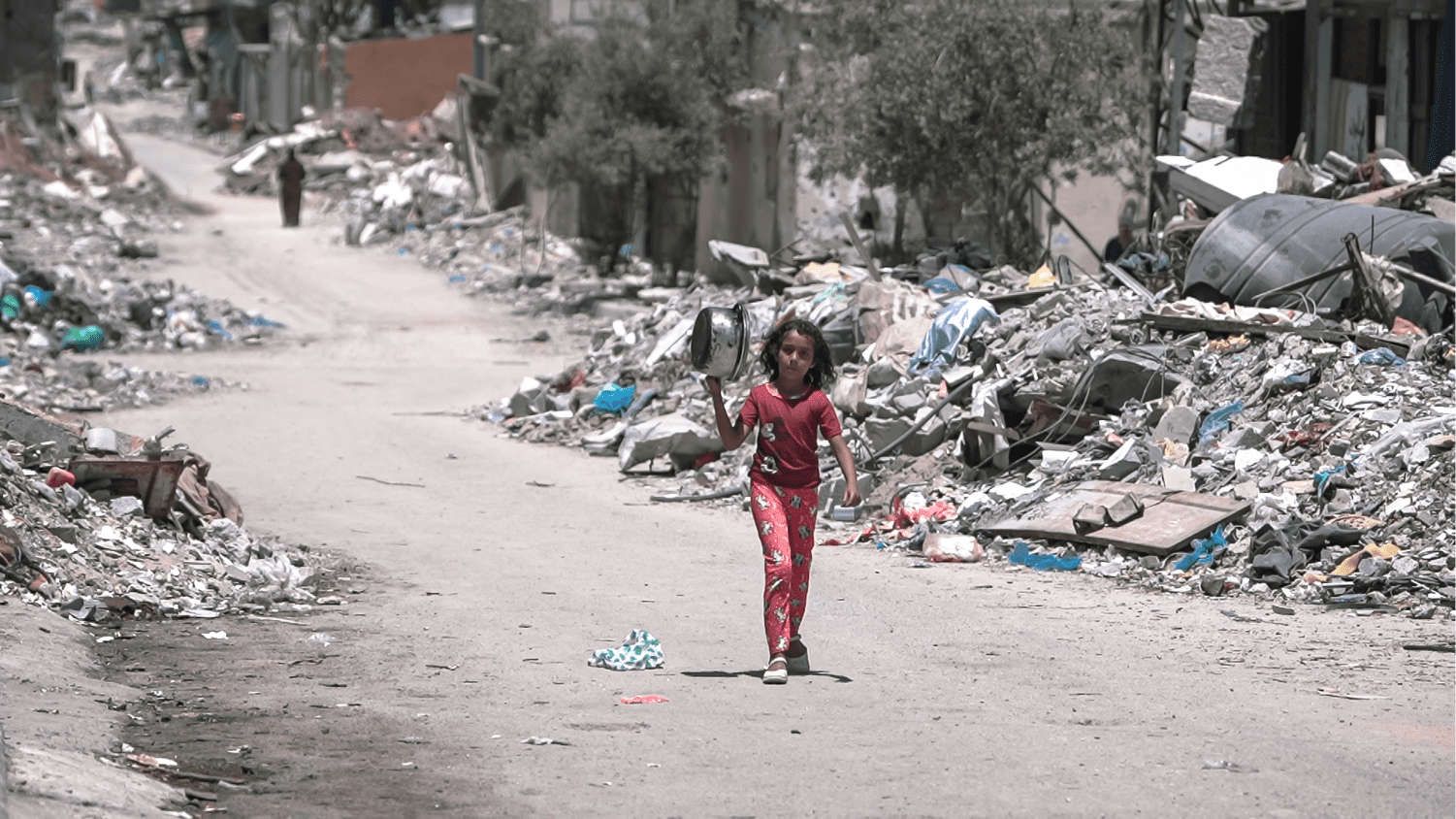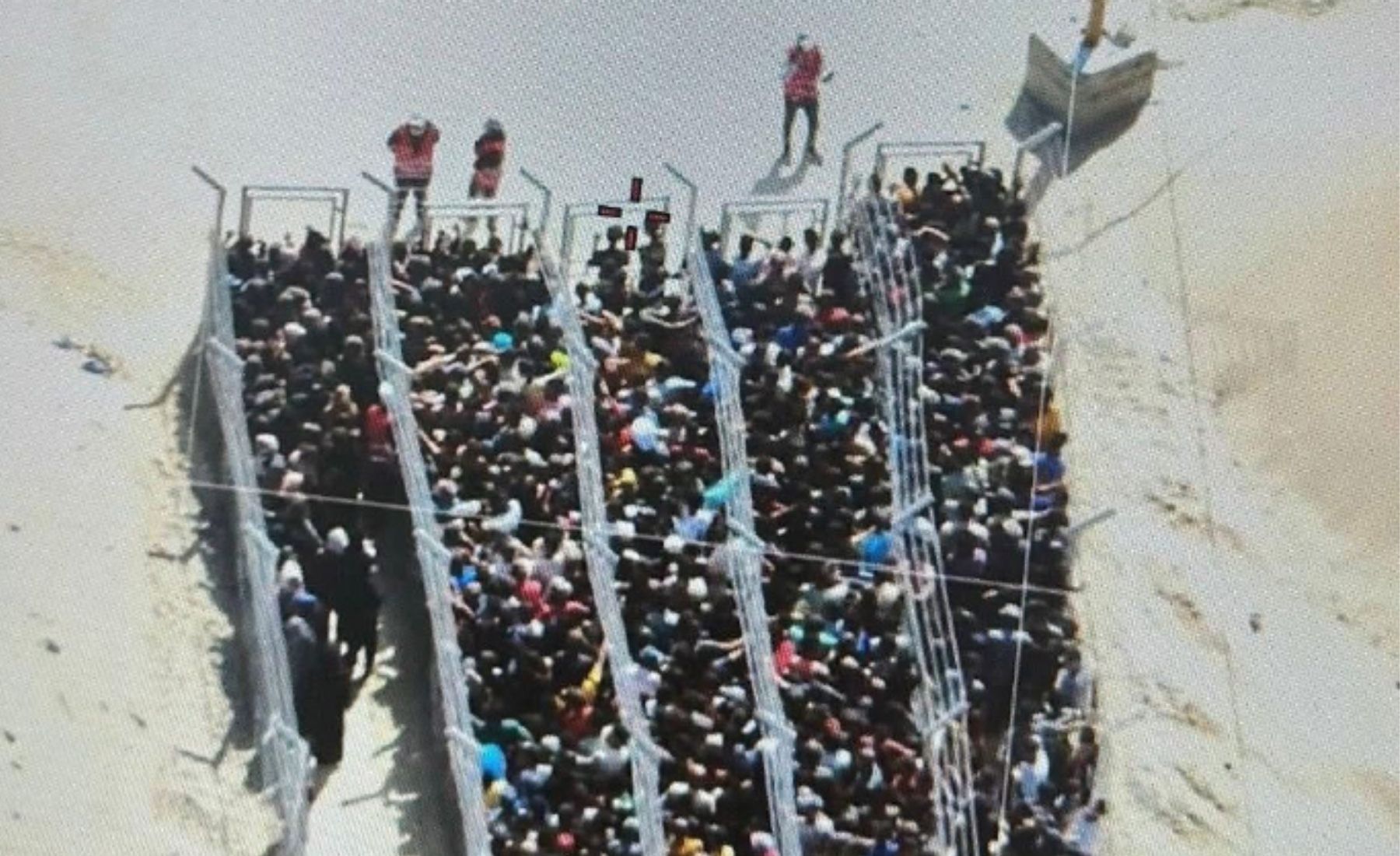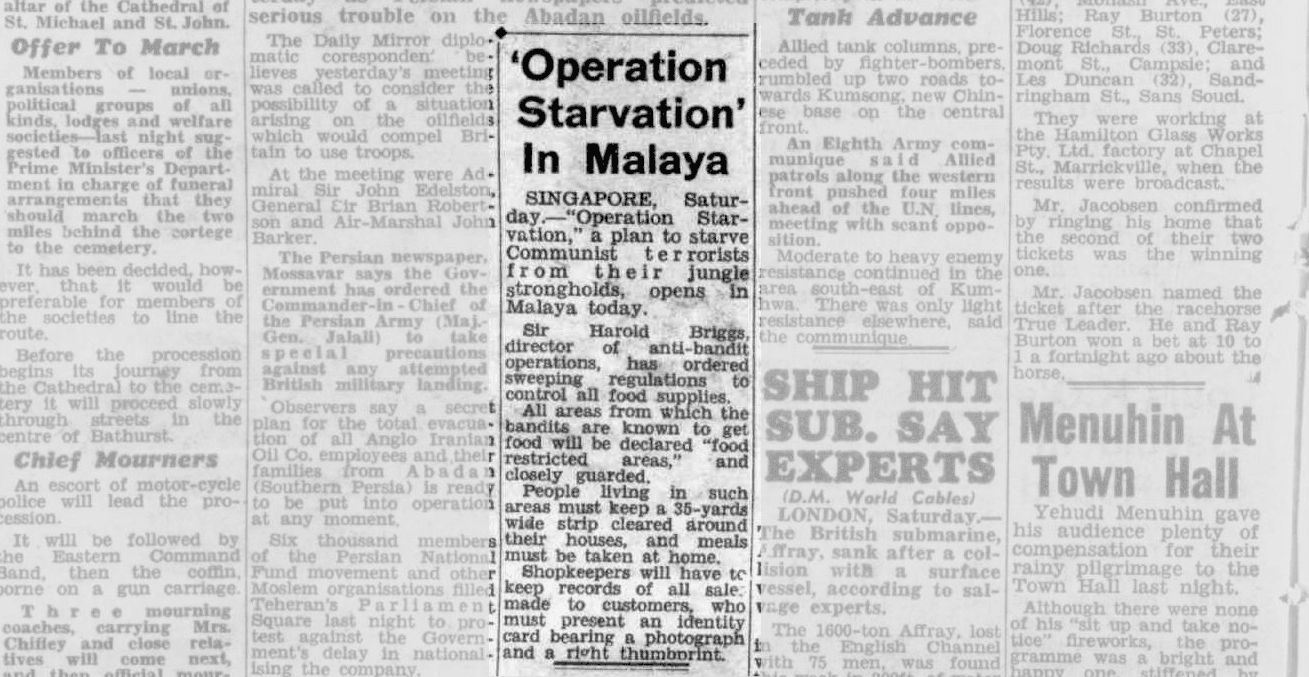Amid an Israeli campaign of atrocities against Palestinians in Gaza (and the West Bank, albeit at a lower scale), one conversation I had with a supporter of Israel early in the conflict continues to echo in my mind. The assault of October 7, 2023, was so cruel, they told me, that it demanded a concerted response. This sentiment echoes across arguments in support of Israel, including from the Biden administration (and despite the proposed ceasefire deal). Complicit in the simplistic narrative is an outdated story about what genocide and mass atrocities are and what kind of people perpetrate them.
There are many people more qualified than I am who can and have contextualized today’s assault in Gaza within the history, economics and politics of the region. Violence in Israel and the Occupied Territories did not start on October 7, 2023. The long history of violence, occupation and displacement in the region is relevant to how we examine today’s escalation. But this short essay attempts a modest intervention focused on the current moment: placing today’s assault against Palestinians in context with other episodes of mass atrocities. Additionally, there have been many interjections from experts in international humanitarian law who have noted that the law explicitly rejects the argument that one side’s attacks against civilians justifies the other’s attacks (see here, here, and here). My goal with this short essay is to contextualize the question of assessing the initial Hamas attack and Israeli response within lessons from comparative genocide studies since the 1990s.
In the first instance, the Holocaust is the wrong example with which to draw parallels. For many decades, genocide studies was dominated by the example of the Holocaust, which is anomalous in several key ways. Notably, there was no armed force associated with the European Jews – the diverse groups of Jews across Europe posed no security threat. Further, the area of Nazi control and its genocidal policies extended across a continent, creating a terrifyingly large zone of destruction. Finally, industrialized killing centers produced unfathomable, bureaucratized horror. In the shadow of this overwhelming case, early study of “genocide” was understood to spring from an ideology of irrational hatred of the other and characterized by near-complete killing of the targeted group.
Since the 1990s, research on genocide[i] has expanded the number of cases and therefore adjusted understanding of the salient factors that lead to and characterize such assaults. One outgrowth of the expanded canon of cases has been a reduction in obsession over the intricacies of the label “genocide.” Overwhelmingly, the scholarly debates today, and the entire edifice of “atrocity response” policy-making that emerged in the first decade of the 2000s, endeavored to move beyond the binary question: is it genocide or not?
“Genocide” is a tricky term that pivots on an “intent to destroy” a group as the ultimate goal, as opposed to controlling the group, displacing them, or fighting an insurgency (as examples). The fact that most genocides occur during armed conflict obscures the work of discerning whether perpetrators ultimately pursue these more strategic goals, or purely want to destroy a group. This focus on genocidal intent pushes attention away from the more obvious matters of what is actually happening to victims, to ask instead, what is happening inside the minds of perpetrators. While “genocide” remains a salient topic for many, increasingly scholars and policy advocates moved away from “genocide” and towards “mass atrocities” and “atrocity crimes”, or reference a suite of crimes addressed under the framework of a Responsibility to Protect (R2P). These efforts shared the goal of capturing a factual basis of widespread and systemic assaults against civilians, which would – theoretically – prompt prevention efforts and policies to halt violence, while avoiding the pitfalls of waiting for a “genocide” decision.[ii] However, as we have seen, states’ support for responding to events within the framework of “atrocity prevention” or “response” often depends on a pre-existing political positions rather than analysis of events.
Here, I focus on one lesson from genocide studies since the 1990s: the strategic nature of mass atrocities. A key insight drawn from examination across cases is that perpetrators of genocide and mass atrocities more often than not face what they perceive to be a critical assault against them or their interests. Referred to as “triggers,” these events do not stand alone – again, context matters — but help us understand the timing of a radical increase in the use of violence against civilians. Perpetrators of genocide respond to triggers by deploying overwhelming force not only against the armed actors who posed a threat, but against an entire civilian population. While in most cases, there are histories of tensions between groups, periods of cooperation and compromise exist within the histories, and periods of violence that characterizes atrocities are the extreme exception. These perpetrators should not, therefore, be labeled as “monsters” or unthinkably heinous people who irrationally hate “others.” They are powerful leaders during a period when there is a serious security threat, who decide to leverage tensions to rationalize a response of unrelenting and unrestrained force.
Below are some examples of acute security threats and acts of violence that predicated campaigns of mass atrocities. In each case, the government or controlling authorities responded by launching a genocidal campaign against civilians.[iii]
On April 25, 2003, Darfuri rebel forces from the Sudan Liberation Movement and Justice and Equality Movement entered regional capital of Al Fashir, and launched an attack against Sudanese military forces stationed there. The rebels inflicted extensive damage: destroying aircraft and a helicopter, and killing 75 personnel, while kidnapping 32 including the commander of the base. The Sudanese government, headed by Omar al-Bashir, responded with a campaign that, between 2003 and 2005, resulted in the deaths of an estimated 134,000 people, either killed or died because they were subjected to starvation conditions. This is ~3% of the total population of Darfur (including people from all groups).
On April 6, 1994, a surface-to-air missile was launched against an airplane as it landed in Rwanda’s capital, Kigali. On the plane were the President of Rwanda, Juvenal Habyarimana, the President of Burundi, Cyprien Ntaryamira, Rwanda military leaders, including Maj. General Deogratias Nsabimana (Chief of Staff), and two other high level military figures — Major Thaddée Bagaragaza, Colonel Elie Sagatwa, Juvénal Renzaho, foreign affairs advisor to the Rwandan president, and Dr. Emmanuel Akingeneye, personal physician to the Rwandan president. While serious questions remain regarding who fired the missile and how far the genocidal plan was already developed at this point, there is no argument that the attack was a significant assault against the Rwandan state’s leadership. The Interim Government, put in place following Habyarimana’s death, launched a genocide that killed between 500,000 and 1 million Rwanda Tutsi civilians. While the number are debated, estimates suggest that up to 75% of the Tutsi population in Rwanda was killed.
In 1990, following elections that saw nationalist parties come to power in Bosnia-Herzegovina, a republic of Yugoslavia, it became clear that a majority of Bosnians would vote in favor of declaring independence. Bosnian Serbs who did not want to live in an independent Bosnian state, realized that the borders of their country would change under their feet. The Bosnian Serb political and military leadership, under Radovan Karadžić and Ratko Mladić responded by unleashing lethal ethnic cleansing and genocide, killing an estimated 100,000 Bosnian Muslims and Croats civilians, or ~4% of the total populations of these groups in Bosnia.
In 1988, Iraq was in full-scale war with neighboring Iran. The country also faced an insurgency from within, from Iraqi Kurdish fighters who lived near the border with Iran. The Kurds had long sought an independent state and, at the time, were reported to be collaborating with Iran. Iraqi President Saddam Hussein responded by launching a campaign to (1) depopulate the countryside by razing Kurdish villages, and (2) decapitate the Kurdish leadership. The assault, which included using chemical weapons against Kurdish villages near the border with Iran, killed an estimated 50,000 to 100,000 people. This occurred within a population of Iraqi Kurds that was approximately 3.5 million, constituting around 3% of the population.
In early 1982, and in the context of long-running civil war in Guatemala, three previously independent guerilla groups joined forces to form the Guatemalan National Revolutionary Unity. In response, junior officers from the Guatemalan army, critical of the poorly managed war and self-enrichment of senior army leaders, organized a coup on 7 March, that installed General Rios Montt as head of state. Under his leadership, the army launched a genocidal campaign against indigenous Maya communities. Of 200,000 deaths and disappearances across the entire armed conflict (1960 – 1996), 81% of civilian deaths occurred in 1981 – 1983, a period of intensive atrocities. At the time Guatemala’s population was around 7 million, of whom an estimated 43% were indigenous. Deaths during this period of extensive violence equaled ~5% of the indigenous population.
I do not raise these examples to exonerate, mitigate or rationalize the horrors that these leaders unleashed against civilians. Omar al Bashir, the interim Rwandan Government, Radovan Karadžić and Ratko Mladić, Saddam Hussein, and Rios Montt are rightfully identified as perpetrators of mass atrocities. Because these leaders are so thoroughly and correctly vilified, we tend to forget that the trigger for mass atrocities was a real and acute security threat. Today, it is clear: no threatened or actual violence perpetrated by an organized insurgent group stands the test of time as an acceptable alibi for relentless targeting of an entire civilian group.
It is a lesson that Israel and its supporters, notably the U.S. government, refuse to learn. I note that ~2% of the population in Gaza has been killed or died from starvation conditions, and violence continues as I write. The extreme urgency today is to halt Israel’s campaign of mass atrocities.
Was Hamas’ attack on October 7, 2023, a shocking and horrifying act? Yes. And the lesson from genocide studies is that this fact does not distinguish Israel from other state perpetrators of atrocities; rather, it presents striking parallels.
[i] For more on discussions about the war in Gaza within the genocides studies community, see: “Statement of Scholars in Holocaust and Genocide Studies on Mass Violence in Israel and Palestine since 7 October” (December 9, 2023); the Journal of Genocide Studies’ “Forum: Israel-Palestine: atrocity crimes and the crisis of Holocaust and genocide studies”; and Abdelwahab El-Affendi’s essay, “Gaza and the dilemmas of genocide scholars,” (Al Jazeera, February 3, 2024).
[ii] The U.S. considered itself a leader in this effort. Two recent endeavors under the current administration include the U.S. Agency for International Development’s (USAID) August 17, 2023 “The U.S. Strategy to Anticipate, Prevent and Respond to Atrocities”; and the State Department’s 2022 report, “U.S. Strategy to Anticipate, Prevent, and Respond to Atrocities.” The administration asserts that “atrocity prevention and the promotion of respect for human rights are central to U.S. national security…”. Samantha Power famously authored a text arguing that the U.S. should prioritize atrocity prevention and response. Today, she oversees USAID; two of whose employees recently resigned in protest over how the agency is obscuring the extent of Israeli obstruction of humanitarian aid to people in Gaza.
[iii] For discussion of the cases cited above, including fatality figures, see online “Mass Atrocity Endings,” cases include: Darfur, Rwanda, Assault Against the Kurds, Guatemala. For discussion of Bosnia, see Conley, Bridget, “Bosnia-Herzegovina: Endings Real and Imagined,” in Conley, Bridget (ed) How Mass Atrocities End: Studies from Guatemala, Burundi, Indonesia, the Sudans, Bosnia-Herzegovina and Iraq (New York: Cambridge University Press 2016).



